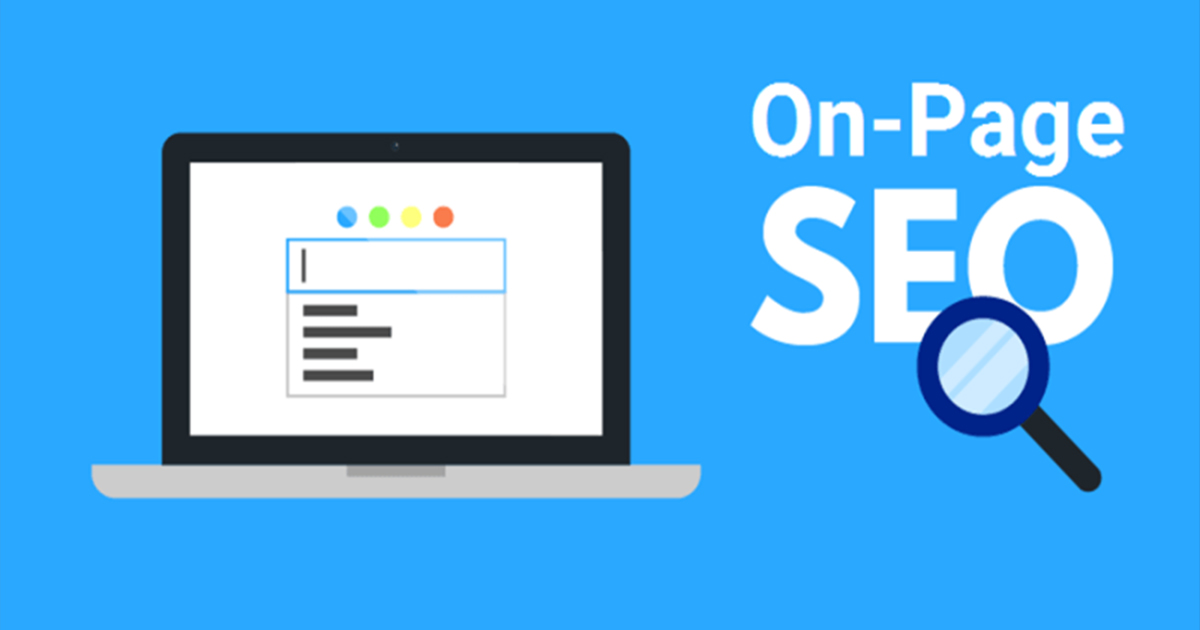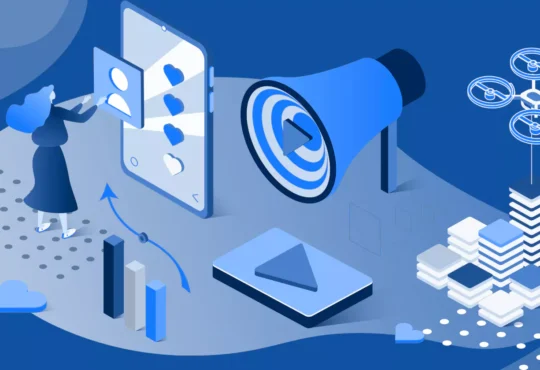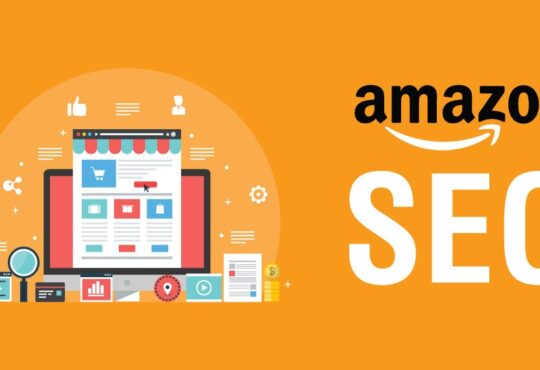
Before we talk about what is the most important element for On-page Search engine optimization, let’s first learn about what SEO is and what exactly ON-PAGE SEO should be. So basically, On-Page SEO is everything you can do within your website to boost your rankings, including keyword optimization, meta descriptions, title tags, alt text, and website structure. Overall, on-page SEO is a very important element of your search engine optimization strategy and it’s something you should learn to understand as well as use to boost your ranking. And one thing that is amazing about on-page SEO is that it is not that hard to do. Like, like, what you have to do is to write top-notch content for your website and make optimized headings and titles. Write good meta descriptions with eye-catching titles, useful optimized keywords, and tags. And Whoa, you have got an optimized website with a high SEO ranking.
Now that we know what On-Page SEO is and how it works, let’s see what it did to the website. Now let’s talk about why On Page Search Engine Optimization is important and which element is the most important for On-Page SEO.
What Is On-Page SEO & Why Is It Important?
On-page SEO is also known as On-Site Search Engine Optimization (On-Site SEO). On-page SEO is the process of improving visibility, increasing traffic, and ranking your website through internal links, tags, and content. The fun thing here is that on-page SEO is in your hands; it is fully in control and you can alter whatever and however you want, depending on what you want and how you want it. Now, what is the purpose of doing all that for a website? The main purpose of doing the process of on-page SEO is to help search engines better understand your website, the crawlers when searching for a particular thing can easily find that and rank your page following that. Doesn’t it sound so cool and easy? Not only is it an easy process to go for, but it does bring a whole lot of benefits to the website and business.
The importance of on-page SEO can be seen by the following
- It helps in increasing traffic
- It ranks your website
- It gives benefits to your website and business
- It helps search engines (crawlers) understand and find your website
- On-page SEO is easy process to boost ranking
- It brings better click-through rates (CTR)
Now that we all know the importance as well as the benefits of on-page SEO, It is an essential part of Search Engine Optimization and an important element itself for organic traffic and website ranking. That you have fully understood the importance and benefits. Now it’s time to discuss the important elements of on-page SEO. Let’s dive right in.
Essential On Page SEO Factors
On-page SEO can be broadly divided into three categories, and these three categories are essential parts of optimizing your website. Each part is equally important but the most important element will be discussed in this blog.
- Content
- HTML
- the design of a website
We will discuss the most important element of On-page SEO first, and that is the “Content” of the website. Overall content matters; it includes title tags, URLs, meta descriptions, headings, tags, keywords, images, internal and external links, or even videos or animations. When one thinks about optimizing a website through search engine optimization, the best thing one can do is to work on the content of the website through on-page SEO; the content should be compelling, valuable, and of high quality. Having the best content on a website is not just the essential factor of ranking a website through on-page SEO; it is the key factor to the success of SEO and digital marketing.
Now don’t get me wrong; content isn’t just about words and blogs and keywords. Content doesn’t mean long blogs and articles about a certain topic, but it does mean working on images, links, tags, animations, headings, and titles. Let’s talk about each one of them in detail so that you know how to make your content unique and effective for ranking and boosting your website and making it SEO optimized.
Title Tags
The first major step is to have a title tag. Make sure that the title tag for search engine optimization does have target keywords. If someone searches for something and you have used the optimized keywords, a crawler will crawl back to your website where you have used such keywords related to the search and rank the website in front of the searcher. Now you know how and why using target keywords in the title tag is important for on-page SEO. But before anything, you must be aware of the length limit of title tags; it must not be too short or too long. A title tag length must be between fifty and sixty characters. If your title tag is too short or too long, then there is a risk of getting your title tag cancelled by a crawler while searching for the matched websites for search.
Page URL
Another important element of content for on-page SEO is a blog post or page’s URL. Now this is something that gets noticed after the title tag, right? So one should work on that after getting done with the title tag. We have already talked about target keywords in title tags. Use such target keywords in the URL that will help in optimizing your website, and don’t forget to make it concise, and make sure that you separate your target keywords with hyphens in the URL.
Avoid lengthy keywords, especially without target keywords. Keep your URL as clean and keyword-focused as possible. It will help the crawler find your website as soon as someone searches for the particular target keyword you used in your descriptive URL.
Meta Descriptions
Well, let’s get that straight; the Meta description does not really impact the optimization and ranking directly. but meta description still considered as important element of content; essential key of on-page SEO. It must be a good, compelling, and clear description of what exactly is on the website, and it must reflect the content of the overall page. meta description helps the website in improving its click through rates (CTR), which ultimately results in increasing traffic and ranking of website. Again, like title tag and page URL, meta description also has a length limit. Here in meta description, length is very important to consider. The length must stay between 70 and 160 characters and no longer than that.
HTML Tags
HTML tags are basically the heading of a page. This part helps in increasing traffic and it is one of the major ranking factors in search engine optimization. HTML tags are the most visual part of the overall content and it is more notable as well.
Now consider writing a blog for your website. The main heading of that blog will be the HTML or H1 tag. Now the only important thing here to consider is making the HTML tag a summary of what the content is about. It must describe the content of the page. The length you must consider is 20 to forty characters. But if you go beyond that limit, you will disturb the SEO of your page. Here’s an important note for the reader; don’t confuse the crawler by making two H1 tags in a blog post. It will confuse the crawler search engines and dilute the overall SEO and website ranking.
Keywords
As we all know, keywords play an important role in the search engine optimization and ranking of websites, and are the most important element for SEO. But the magic here is to find the target keyword and use it correctly in the content of the website page to optimize it organically. An important note for content writers and SEO experts is to make sure that they use their target keyword in the first paragraph and then, after that, use that target keyword in the rest of the post.
Images
When you are thinking of enhancing your website and making a very unique impression, try using relevant images to make the search engine perform well and significantly better so that it can easily trace your website and rank it for the searcher.
The important thing here to keep in mind is to use the target keyword in the filename of the image, in the image title as well as in the alt tag. In this way, the image you use will have your target keyword and get visible when crawlers search for particular keyword search results and get your image trace in relevant image search. It will increase traffic and website ranking. Also, the size of the image you are using must be optimized. It must not be too large or too small in size, and for that, use media queries to get an idea of whether your images and media are responsive on mobile devices or not.
Internal and External Links
Internal and external links are one of the most important parts of an SEO strategy. Links, both internal and external, serve as a signal that your website is optimized and a good source of information. Hence, Google will eventually list it in the websites that are worthy of citation. It will eventually help in ranking websites and boosting trust signals, which will help your website gain traffic.
Wrap Up
Of course, the first and most important aspect of on-page SEO is your content. If your material isn’t unique and interesting to read, you’re likely to obtain a lot of views or a high search engine rating. That is why it is important to focus on the content when processing on-page SEO on website.




